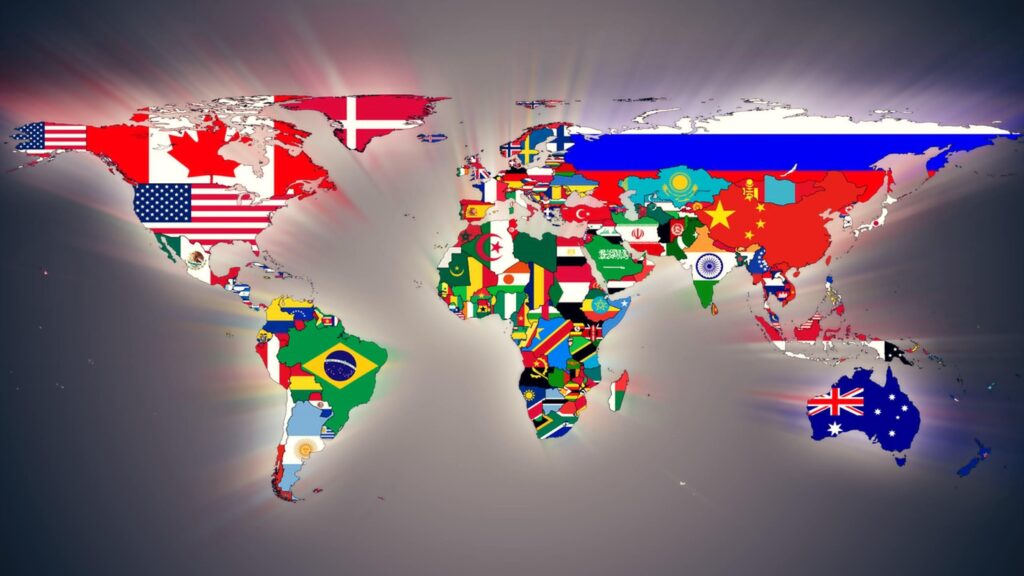Introduction
Africa, the second largest continent on Earth, is a land of unparalleled diversity, encompassing 54 countries and countless cultures, languages, and landscapes. The map of Africa is as intricate and fascinating as the continent itself, reflecting its rich history, natural wonders, and complex geopolitics. This comprehensive guide aims to delve into the intricacies of the Africa map, exploring its geographical features, political divisions, historical significance, and more.
Geographical Overview
Africa’s Position
Located predominantly in the Eastern Hemisphere, Africa is bordered by the Mediterranean Sea to the north, the Atlantic Ocean to the west, the Indian Ocean to the southeast, and the Red Sea to the northeast.
Major Physical Features
The continent boasts diverse landscapes, including vast deserts like the Sahara in the north, lush rainforests like the Congo Basin in the center, savannas, mountains like Kilimanjaro and the Atlas Mountains, and extensive river systems like the Nile, Niger, and Zambezi.
Climate Zones
Africa spans multiple climate zones, from the arid Sahara to the tropical rainforests, resulting in varied weather patterns and ecological niches.
Political Divisions
Countries
Africa is composed of 54 recognized countries, each with its own government, culture, and history. Some of the largest and most populous nations include Nigeria, Ethiopia, Egypt, and South Africa.
Regional Organizations
Several regional organizations exist within Africa, such as the African Union (AU), which aims to promote unity, peace, and prosperity among African nations. Other notable organizations include the Economic Community of West African States (ECOWAS) and the East African Community (EAC).
Historical Context
Colonial Legacy
Much of Africa’s modern political map is shaped by its colonial past, with European powers dividing the continent among themselves during the 19th and early 20th centuries. This legacy has left lasting impacts on borders, languages, and cultural dynamics.
Decolonization
The mid-20th century saw a wave of decolonization movements across Africa, leading to the independence of many nations. This period reshaped the political landscape of the continent, although it also brought challenges such as ethnic conflicts and struggles for power.
Key Landmarks and Points of Interest
Natural Wonders
Africa is home to numerous natural wonders, including Victoria Falls, the Serengeti Plains, the Nile River, and the Sahara Desert. These landmarks attract millions of tourists each year and play a significant role in the continent’s ecological and cultural heritage.
Historical Sites
From ancient civilizations like Egypt and Nubia to colonial-era fortresses and slave trade routes, Africa is replete with historical sites that offer insight into its rich heritage and complex past.
Urban Centers
Major cities such as Cairo, Lagos, Johannesburg, Nairobi, and Kinshasa serve as economic hubs, cultural centers, and melting pots of diversity, reflecting Africa’s dynamism and urbanization trends.
Challenges and Opportunities
Political Instability
Africa grapples with political instability, including conflicts, corruption, and governance issues in some regions. These challenges hinder development efforts and contribute to humanitarian crises.
Economic Development
Despite abundant natural resources, many African nations face economic challenges such as poverty, unemployment, and income inequality. However, the continent also presents opportunities for growth, innovation, and investment in sectors like agriculture, technology, and renewable energy.
Environmental Concerns
Climate change, deforestation, desertification, and pollution pose significant environmental threats to Africa’s ecosystems and biodiversity. Sustainable development initiatives and international cooperation are crucial for addressing these challenges.
Future Prospects
Integration and Cooperation
African nations are increasingly recognizing the importance of regional integration and cooperation in addressing common challenges and promoting shared prosperity. Initiatives like the African Continental Free Trade Area (AfCFTA) aim to boost intra-African trade and economic integration.
Technological Advancements
The rapid adoption of technology, particularly mobile phones and internet connectivity, is transforming various sectors in Africa, including finance, healthcare, and agriculture. Innovation hubs and startups are emerging across the continent, driving entrepreneurship and digital inclusion.
Youth Demographic Dividend
With a youthful population, Africa has the potential to harness its demographic dividend by investing in education, skills development, and youth empowerment. This demographic shift could drive economic growth and social progress in the coming decades.
Conclusion
The map of Africa is not merely a geographical representation but a tapestry of cultures, histories, and aspirations. From its diverse landscapes and political divisions to its rich heritage and future prospects, Africa continues to captivate and inspire the world. By understanding the complexities and nuances of the Africa map, we can appreciate the continent’s resilience, diversity, and potential for a brighter tomorrow.
- Maps Of Papua New Guinea - May 10, 2024
- Maps Of California - May 9, 2024
- Maps Of Turkey - May 4, 2024




